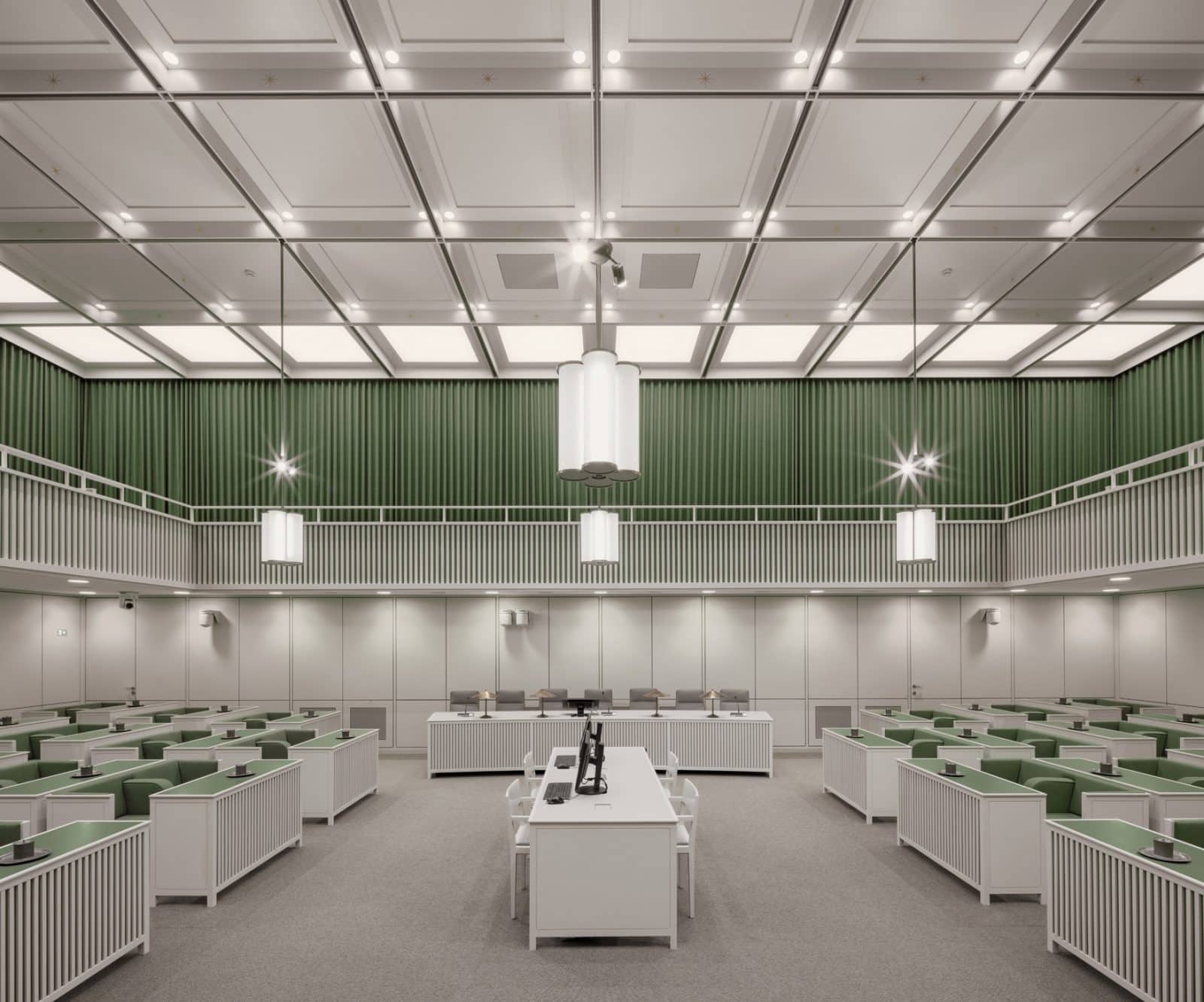Back to School with… Rick ten Doeschate - session #3
with Ninke Happel, Job Floris,
Jaakko van 't Spijker and Alexandre Furtado Melville
A public conversation with Rick ten Doeschate, Ninke Happel, Job Floris, Jaakko van 't Spijker and Alexandre Furtado Melville, on the political perspective of representation and the formal expression of public buildings. Tuesday 20th of June, 19:00 - 21:00. Tickets include a simple dinner. Doors open and dinner served from 18:00h onward.

Happel Cornelisse Verhoeven, Eerste Kamer der Staten-Generaal - The temporary home of the Upper House and Council of State accommodation of the Senate, The Hague
In this third event on the 20th of June, we focused on the political perspective of representation and the formal expression of public buildings. In a public conversation with Rick ten Doeschate, Ninke Happel, Job Floris, Jaakko van 't Spijker and Alexandre Furtado Melville, we address the question: Should architecture represent the diversity in society, or rather strive for an ‘architecture parlante’ that binds us? Is a ‘universal’ architecture possible? What kind of ‘style’ is appropriate? Is the European tradition inclusive enough or should architecture renew itself, and in what way?
ANOTHER REPRESENTATION; FORMAL EXPRESSION OF PUBLIC BUILDINGS
‘For this edition of Back to School with… we’ve invited architect Rick ten Doeschate to curate a series around the topic of Another representation; Formal expression of public buildings.
Aesthetics’, ‘Design’, ‘Style’, ‘Representation’; these are subjects that for a long time have scarcely been discussed in architecture. Where was the tipping point? Rem Koolhaas’s period at the TU Delft in the 1980s laid the foundations for SuperDutch, the glorious period in which Dutch architects conquered the world armed with economic, technical, and planning concepts. Since then, the representative, linguistic, function of architecture as it was central to postmodernism in the 1970s and 1980s has barely been mentioned. The fact is that the architecture debate has for the past thirty years revolved around ‘extra-architectural’ issues such as economy, program, health and sustainability.
Lately, a group of architects has once again drawn attention to “intra-architectural” subjects such as material, articulation, composition and, indeed, representation. It is a group without a fixed outline, but what unites its members is their resistance to the conceptual architecture of the SuperDutch and their embrace of designing within the continuity of the ‘European tradition’. Their attention to the subject and their high-quality architectural production is commendable. But it is restrictive that attention to the “intra-architectural” side of architecture is only associated with this group. If only because you would expect the tradition to change in line with the social context. In addition, this position raises (political) questions about the way in which the European tradition is experienced by different groups in society. Political identity thinkers such as the late Roger Scruton and Thierry Baudet have used the associated vulnerability and used ‘traditional’ architecture to their advantage.
Public buildings entail a special responsibility. Public architecture must – by default – be accessible, recognisable, inviting, and meaningful to different people. This is related to what happens in the building, how it fits in with the context, with representation in the design process (is the group allowed to design and participate diverse enough), but also with the formal side; the physical presence of a building. The appearance, sound, smell and texture mean that some people will recognise themselves in a building and others will not. The rapidly growing diversity in society increases the importance of this subject. Should architecture represent diversity, or rather strive for an ‘architecture parlante’ that binds us? These are political choices in architectural form. Architects cannot hide behind platitudes about inclusiveness; we need to better understand and discuss the formal effects of architecture so we can consciously use them in our designs.
In this series we want to broaden the view on the formal dimension of architecture. On three evenings we will illuminate the subject from three perspectives: the historical, the architectural, and the political.
About Back to School with
For Back to School with… we invite professionals, makers and (critical) thinkers from inside and outside the field of architecture and urban design to share their most current thoughts, recent questions and latest or ongoing research. For each series we ask a professional guest to design and curate a lecture programme around one topic or question that has their urgent and great interest at this moment and to bring together different speakers to elaborate on the subject in three consecutive evening events.
During this series we deal with the fact that architecture debate has for the past thirty years revolved around ‘extra-architectural’ issues such as economy, program, health and sustainability, while subjects such as ‘Aesthetics’, ‘Design’, ‘Style’, ‘Representation’ have scarcely been discussed. In this series we want to broaden the view on the formal dimension of architecture. On three evenings we will illuminate the subject from three perspectives: the historical, the architectural, and the political.
See for more info on the complete series here